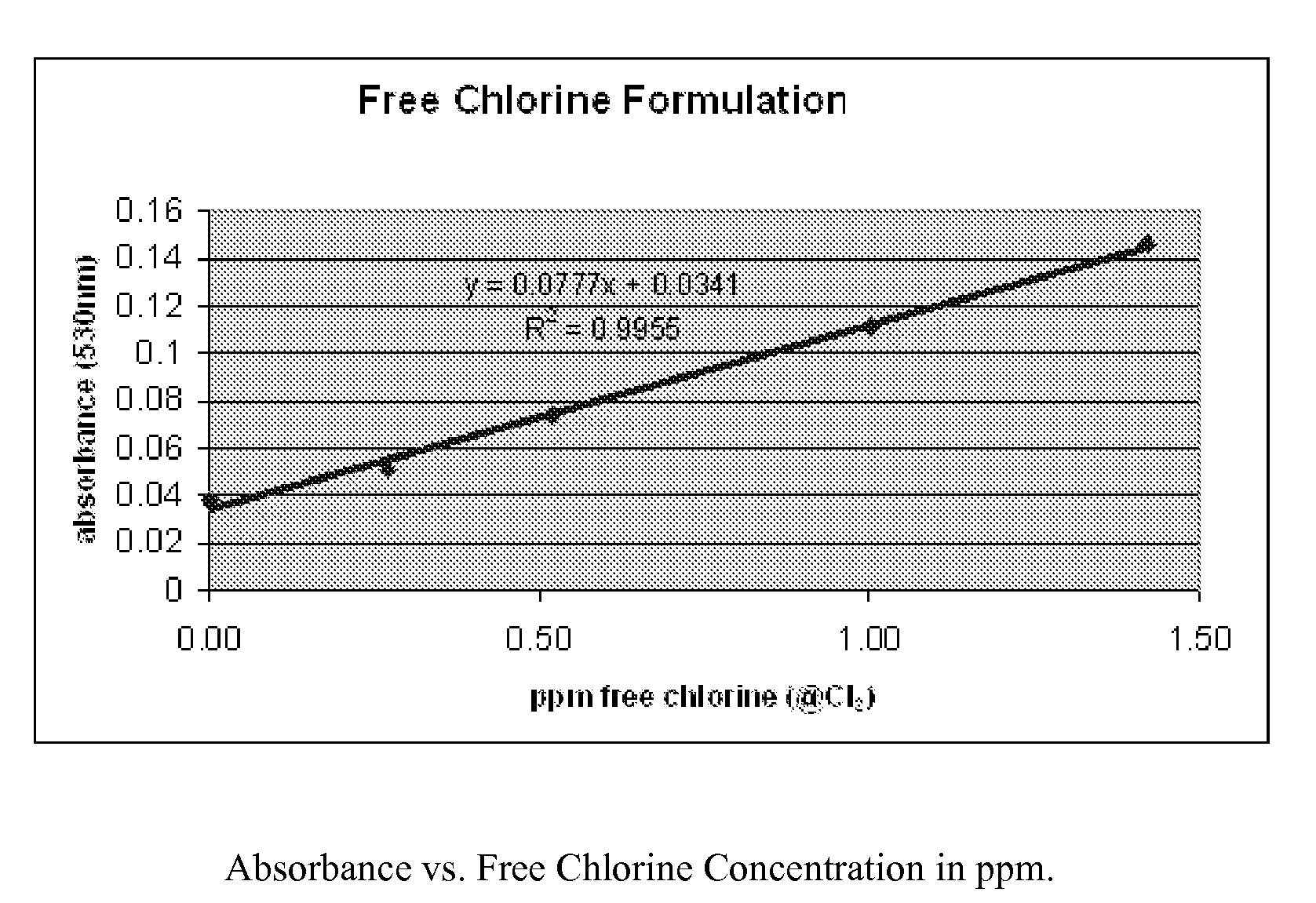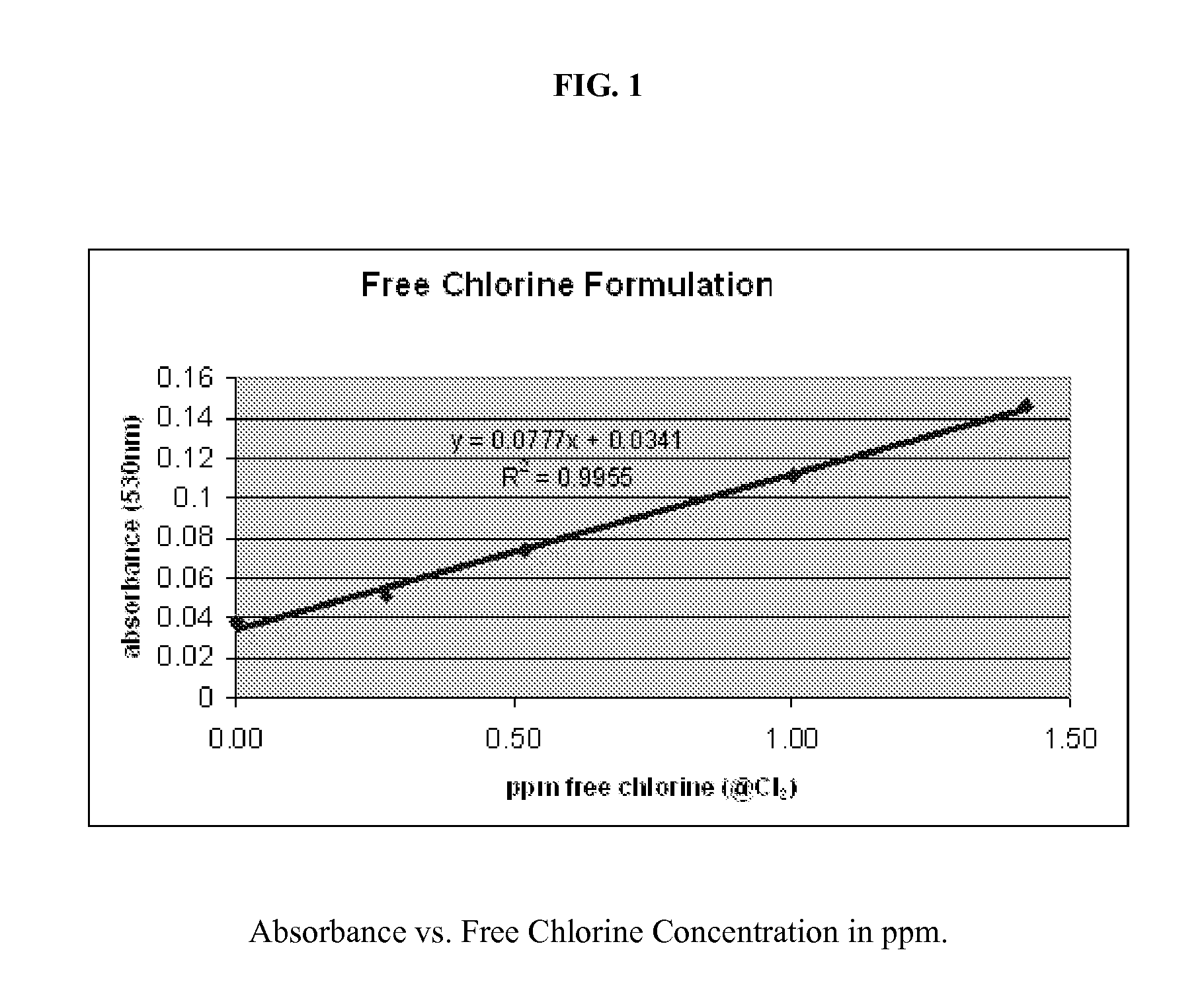Film sensors for detecting free chlorine
a film sensor and free chlorine technology, applied in the direction of instruments, chemical methods analysis, analysis using chemical indicators, etc., can solve the problems of difficult to predict the best formulation of the sensor material, immobilization into a solid support,
- Summary
- Abstract
- Description
- Claims
- Application Information
AI Technical Summary
Problems solved by technology
Method used
Image
Examples
example 1
[0040]A 2.5 to 3.5 micron film was created. PHEMA at a Wt. % of 11.5%, Boric acid at a Wt. % from 4.5 to 7.0%, glycerin at a Wt. % from 5.0 to 9.5%, and Syringaldazine at a Wt. % of 1.3% were mixed in Diethylene glycol methyl ether and 1-Methoxy-2 propanol solvent (65 / 35) system. The film created demonstrated free chlorine detection from 0.1 ppm to 2.0 ppm in synthetic cooling water. The feasibility of screen printing the reported compositions was demonstrated as well as calibration curves for free chlorine.
example 2
[0041]Free chlorine ink was prepared by the required materials using the following two step order of addition:
Formulation #1
[0042]
weight %pHEMA stock solution1) Poly-2-hydroxymethyl methacrylate (pHEMA)23.102) Diethylene glycol methyl ether (DM)49.903) 1-Methoxy-2-propanol (PM)26.90Composition1) pHEMA stock solution (see above)48.742) Glycerin0.943) Boric acid (anhydrous)0.584) Diethylene glycol methyl ether31.815) 1-Methoxy-2-propanol17.136) Syringaldazine0.15
[0043]The resulting ink was screen printed onto 3.5″×5 polycarbonate plates. The solvent was evaporated leaving a thin dry square film sensors. A fluidic sampler was placed on the plate and ˜3.0 ml of water was added by means of a syringe to the sampler plate. The subsequent color change of the film sensor was measured on a commercial 96 well plate reader. Absorbance was measured via spot cluster mean at 530 nm. Table 1 shows the data from this embodiment and FIG. 1 shows the resulting graph of absorbance vs. free chlorine con...
PUM
 Login to View More
Login to View More Abstract
Description
Claims
Application Information
 Login to View More
Login to View More - R&D
- Intellectual Property
- Life Sciences
- Materials
- Tech Scout
- Unparalleled Data Quality
- Higher Quality Content
- 60% Fewer Hallucinations
Browse by: Latest US Patents, China's latest patents, Technical Efficacy Thesaurus, Application Domain, Technology Topic, Popular Technical Reports.
© 2025 PatSnap. All rights reserved.Legal|Privacy policy|Modern Slavery Act Transparency Statement|Sitemap|About US| Contact US: help@patsnap.com


